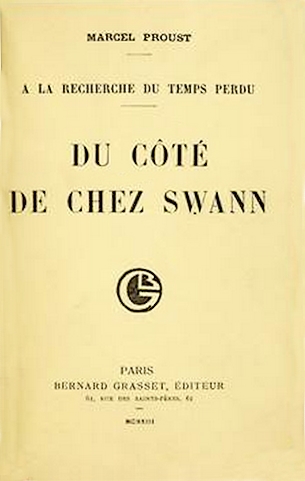Le Pho, « Elegante à la tasse de thé », 1938-40, Hanoi’s madeleine de Proust and the “immense edifice of memory”
Le Pho painted the “Élégante à la tasse de thé” around 1938-40 in Paris – after his return in 1937.

The artist chose pale colors predominantly, reminiscent of his oils on canvas executed earlier in the decade in Hanoi. It’s like an esoteric denial of strong color and a desire to plunge us into an ethereal atmosphere.
Colors predominantly pale but nuanced.
This is reflected in the beige of the ao dai, the black-tinted diluted ink of the background, the lighter beige of the face and hands, the white of the headdress, the scarf, the plant-decorated teapot, the terracotta stove, the wisps of steam and the inside of the bowl and saucer.
The black of the hair and part of the tabletop draw the viewer’s gaze to the woman’s face and hands, one holding the tea bowl, the other bringing the scent of tea towards her. It’s the woman who leans over.
The brown in the bowl’s side and goblet is the only real hint of color within the clear cameos that bring a diaphanous quality to all the elements described. All the physical reality of the other objects. All servants of the event: the steeping of tea.
All contribute to the Hanoian elegance endlessly described by Le Pho: the ao dai, the headdress, the scarf, the black hardwood table, the plant-patterned teapot, the simple candle stove, the small brown bowl that holds the tea, the brown cup. But the essential element is the tea’s emanations, which Le Pho exaggerates. A tea that we’ll postulate to be Thái Nguyên, the best, harvested north of Hanoi. Who will contradict us…?
What’s more unusual in this painter’s work is the extreme, almost ecstatic sensuality of the woman’s face, feeling rather than smelling the beverage. A crystallisation.

Marcel Proust sublimely described – in the absolute – this moment:
“And suddenly the memory came to me. The taste was that of the little piece of madeleine that on Sunday mornings in Combray (because that day I didn’t go out until it was time for mass), when I went to say hello to her in her room, my Aunt Léonie would offer me after soaking it in her tea or linden infusion. The sight of the little madeleine reminded me of nothing until I had tasted it; perhaps because, having often seen them since, without eating them, on the shelves of confectioners, their image had left those days of Combray to be linked to other more recent ones; perhaps because nothing of these memories, so long abandoned to memory, survived, everything had disintegrated; the forms – and that of the little pastry shell, so richly sensual beneath its severe and devout pleating – had disappeared, or, drowsy, had lost the force of expansion that would have allowed them to reach consciousness. But when nothing remains of an ancient past, after the death of beings, after the destruction of things, only the smell and the flavour, more frail but more vivid, more immaterial, more persistent, more faithful, remain for a long time to come, like souls, remembering, waiting, hoping, on the ruin of everything else, carrying without bending, on their almost impalpable droplet, the immense edifice of memory”.
All these magnificent words apply to Le Pho: the madeleine of our beautiful Hanoian here is the bowl of tea.
The effect described by Proust, illustrated here by Le Pho, is part of the phenomenon of involuntary memory: the reminiscence provoked by the madeleine or the tea is not the result of a conscious effort to recall this or that memory. What’s more, the narrator and the painter have no idea that the madeleine or tea they are about to taste will bring back forgotten memories.
Proust points out that: “The information that voluntary memory gives about the past preserves nothing of it”. It is “smell and taste” that structure “the immense edifice of memory”. Here, the taste and smell of tea. And an aunt not named “Léonie”, a place that is not Combray.
Le Pho, in Paris in 1938-40, reminisces about his native Tonkin and the years gone by. He expresses no regrets. This picture of an emancipated woman, enjoying herself, is that of universality, that truth, whatever the place, whatever the time. This universality can only be contested if one is lying or mistaken.
Art has always had great leniency for those who make mistakes, and great severity for those who lie to it.
For if universality is truth, this truth is also eternal.
Proust and Le Pho, two galaxies, one universe.
Jean-François Hubert
[…] work. Her face, with red cheeks, expresses not the usual haughty seduction of the generic women of Le Pho, Vu Cao Dam, Mai Thu, for example, but a kind of vulnerability. Her lipstick, made-up eyes and […]